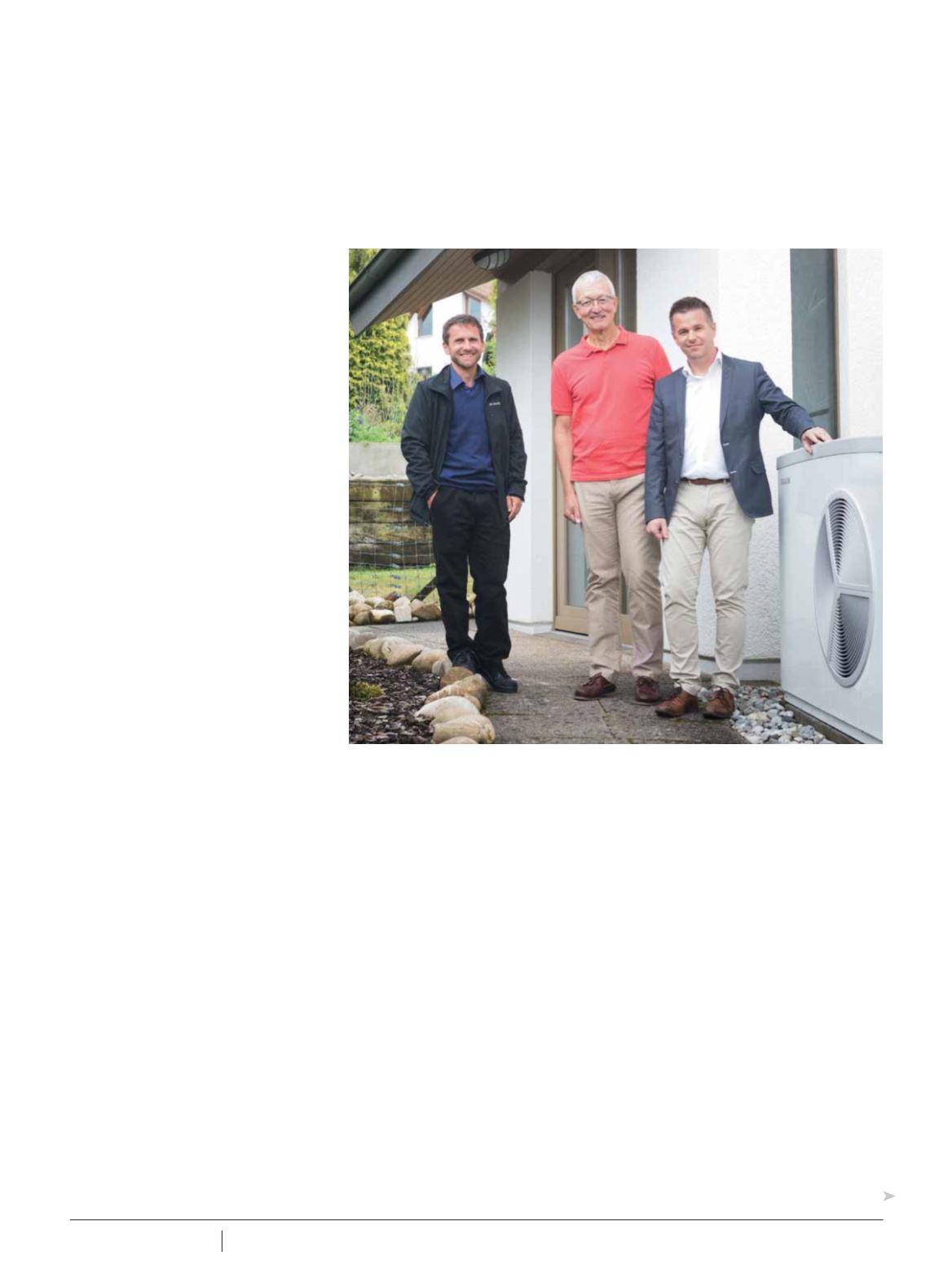

5 8
PLUMBING CONNECTION Summer 2017
HEATING UP A 6-STAR
H
eat pumps for use in hot water
systems and hydronic heating
still remain a mystery for
many plumbers who are more familiar
with installing and servicing gas-based
or reverse-cycle systems.
Heat pumps has been used
extensively overseas as a cost effective
method of providing domestic hot water
and home heating, particularly in the
colder climates of Europe.
In order to help the Australian
market come to terms with specifying,
installing and commissioning heat
pumps for hot water and hydronic
heating systems, Stiebel Eltron have
brought specialist Oliver Joss from
the company’s Switzerland office to
Australia.
As head of technology and product
management, Oliver was leading the
in-house training facility for in-depth
industry knowledge on energy, heating
and ventilation. With Australia becoming
increasingly more aware of renewable
solutions, he has recently joined the
local team to offer his expertise in
heat pump technology and ventilation
systems to Australian customers.
According to figures from the World
Energy Council, Australia’s average
electricity consumption per household
per year is the third highest in the world.
With more than 7,000 kWh per year,
Australian households use more than
double the electricity compared to the
global average: 62% of this energy is
used for heating, cooling and hot water
- it makes sense to start reducing this
figure.
There is a groundswell to move
toward more electricity usage instead
of gas, particularly as renewables
such as solar PV are becoming more
cost effective (even with poor feed-in
tariffs). As a consequence Stiebel Eltron
has recognised that products that
are smart-grid ready – including heat
pumps are a viable option for Australian
households.
“In Australia, we have seen
consumers wanting more autonomy
in what energy source they can use,”
says Darren Fletcher, national product
manager, Stiebel Eltron. “For example,
in Victoria, gas was traditionally seen
as a cheap, convenient energy source
and taken for granted. With energy
prices rising, the whole energy sector is
becoming a hot topic once more.”
Hydronic heating can be installed in
two formats: in-slab or as a radiator.
Darren recommends in-slab as the
more efficient method as the heat can
be retained in the concrete’s thermal
mass. The flow temperature of the
water coursing through the pipework
can be at, 43–45
o
C, compared to a
radiator at 50
o
C plus. This demands the
surface area of the radiator needs to
be larger to heat the room – and many
homes simply don’t have the wall space
for large hydronic radiators.
The use of hydronic heating tends to
be taken up by homeowners who are
looking to have a more energy efficient
and liveable home where 6-star rating is
a minimum.
“Typically, home owners who are
building their own home who are looking
at this type of heating are well versed
on what they want,” says Darren. “They
are often on the third or fourth home,
and possibly downsizing. The types
of specifications will include double
glazing, high level insulation and to their
own design – not a cookie-cutter home.
Hydronic heating with a heat pump is a
Hydronic heating using a heat pump need not be a mystery to install, but for the 6-star homeowner, it
is a must-have, writes
Deborah Andrich
HEAT PUMPS AND HYDRONIC HEATING
Oliver Joss (right) is an expert on HVAC and heating systems and is here from Stiebel
Eltron, Switzerland, to help the Australian office educate plumbers and suppliers on
the installation and specification of heat pump hydronic heating systems.
















